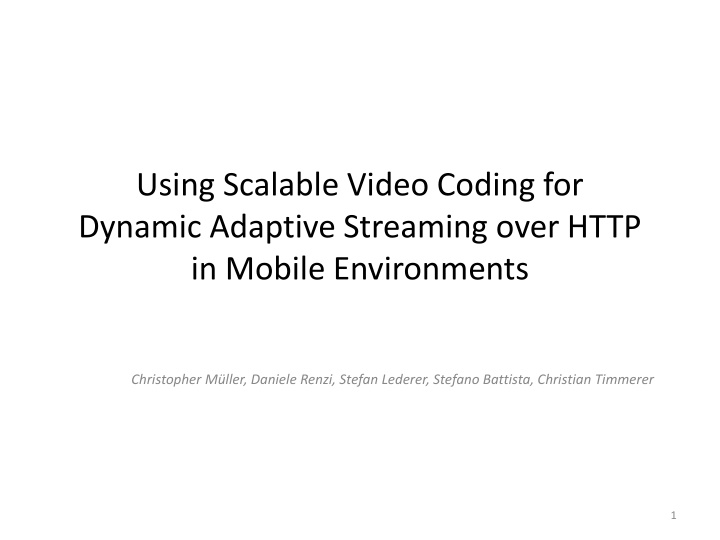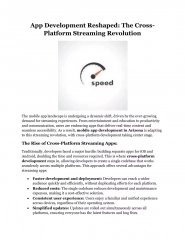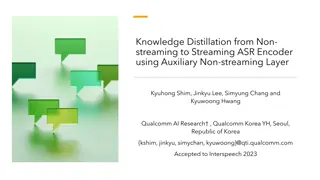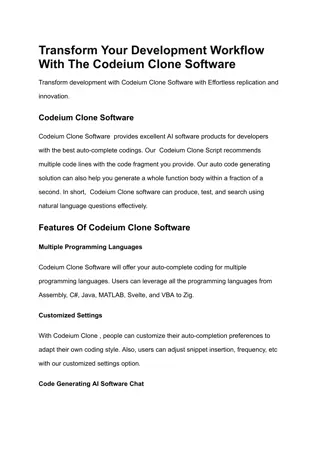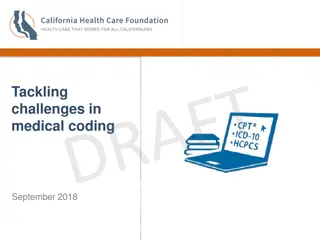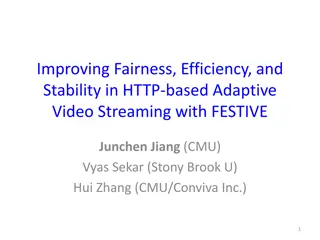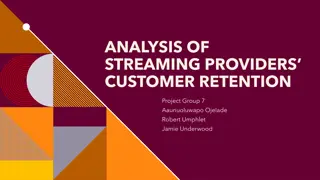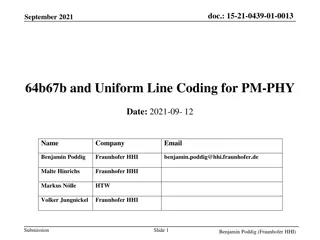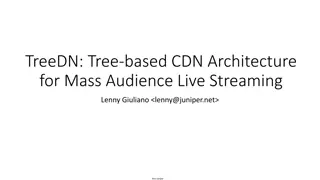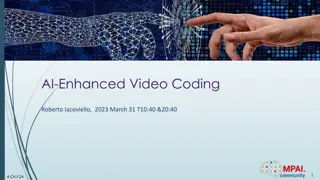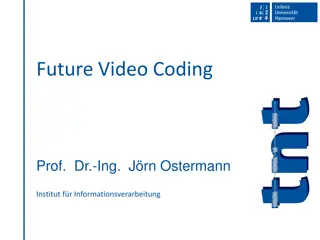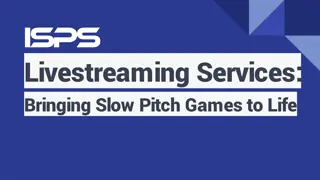Using Scalable Video Coding for Dynamic Adaptive Streaming over HTTP
This study explores the integration of Scalable Video Coding (SVC) into MPEG-DASH for enhanced video streaming in mobile environments. It discusses the benefits of SVC in improving segment selection flexibility and enhancing existing streaming protocols. Detailed experiments and evaluations on bandwidth traces, network emulation, and client setup are presented to demonstrate the performance of MPEG-DASH and SVC.
Uploaded on Feb 21, 2025 | 0 Views
Download Presentation

Please find below an Image/Link to download the presentation.
The content on the website is provided AS IS for your information and personal use only. It may not be sold, licensed, or shared on other websites without obtaining consent from the author.If you encounter any issues during the download, it is possible that the publisher has removed the file from their server.
You are allowed to download the files provided on this website for personal or commercial use, subject to the condition that they are used lawfully. All files are the property of their respective owners.
The content on the website is provided AS IS for your information and personal use only. It may not be sold, licensed, or shared on other websites without obtaining consent from the author.
E N D
Presentation Transcript
Using Scalable Video Coding for Dynamic Adaptive Streaming over HTTP in Mobile Environments Christopher M ller, Daniele Renzi, Stefan Lederer, Stefano Battista, Christian Timmerer 1
Introduction DASH Already exist industry player which are using HTTP streaming server. Convenience for the an user and streaming provider. SVC Enhance the flexibility of segment selection. Goal Improve their existing MPEG-DASH. The buffer model 2
Integration of SVC into MPEG-DASH Base layer Enhancement layer 3
Experiments (1/5) DASH Content AVC 14 different bitrates with X264 GOP size : 48 frames SVC 13 different bitrates (1 base, 12 enhanc.) with their own encoder GOP size : 48 frames Each layer depends on the previous one. 4
Experiments (2/5) Bandwidth Traces Under three different network emulation settings (tracks 1-3) Evaluation Metrics Average bitrate Number of quality switches Number of unsmooth seconds Buffer Level 5
Experiments (3/5) Experimental Setup Bandwidth Shaping Control bandwidth for the client Network Emulation Control all network parameters such as RTT = 150ms HTTP server Apache Web server All are Ubuntu 10.04 6
Experiments (4/5) MPEG-DASH and AVC Based on their VLC plugin Content has been generated using DASHEncoder which is a wrapper tool for X264 and MP4Box container. Use buffer model 7
Experiments (5/5) MPEG-DASH and SVC Client based on Windows. The dash library only available for windows. Be able to cancel requested segment More aggressive buffer model 9
Conclusions and Future Work An exponential buffer model allows for a better utilization of the available bandwidth. SVC layered coding structure allows for more flexibility. Actual impact on the QoE is subject to future work. Help to improve their adaptation logic for DASH. 12
Related Work Focus on cache performance and encoding. iDASH: Improved Dynamic Adaptive Streaming over HTTP using Scalable Video Coding - 2011 ISO Base Media File Format (ISOBMFF) Implications of the ISOBMFF on Adaptive HTTP Streaming of H.264/SVC. 2012 Evaluated exist industry player used different test content for each system. An experimental Evaluation of Rate-Adaptation Algorithms in Adaptive Streaming over HTTP - 2011 HTTP streaming under vehicular mobility within 3G mobile networks. Empirical evaluation of HTTP adaptive streaming under vehicular mobility - 2011 13
